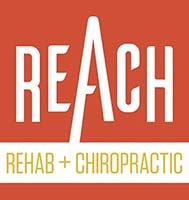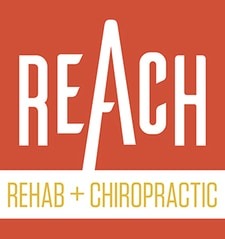How Your Shoulder Pain May Not Be a Shoulder Problem
 What would you think if I told you your shoulder pain wasn’t a shoulder problem? It takes a bit to process.
What would you think if I told you your shoulder pain wasn’t a shoulder problem? It takes a bit to process.
A 55-year-old gentleman came in to see me with an eight-year history of on and off right shoulder pain. Let’s call him Terry. A co-worker who I had treated previously referred Terry to me.
Terry didn’t waste any time to make it crystal clear he was ready for surgery, armed with an MRI confirming that had a full rotator cuff tear of his right shoulder. Terry, get it!?
Needless to say, why did he make an appointment to see a chiropractor down Main Street? How on Earth could they fix a tear?
Come to find out the reason why he came in to see me was because a prior patient made a recommendation for shoulder rehab. Because he was an avid golfer and I’m a certified Titleist Performance Institute (TPI) Medical Professional, he figured I could help him with prehab and address other areas of his body that may be subjecting excessive stress on his shoulder and limiting his swing efficiency.
Discovering the Source of the Shoulder Problem
I worked Terry up through a thorough history, asking thoughtful questions. I was skeptical this was 100% a shoulder problem, regardless of the MRI. In my previous experience as well as the shared clinical experience of other clinicians, not all shoulder pain is a shoulder problem.
I asked Terry if I could do a quick cervical screen. With a confused look on his face, he skeptically accepted. Saving you the minute details, the assessment of his neck and shoulders demonstrated dysfunction and movement imbalances, indicating something to work with.
We set a few baseline tests to measure cause and effect. We started with repeated movements to see if we could quickly change the tests. By performing repeated movements, the results tell us if movement can fix the problem. If so, it guides us in the direction of resolution.
Working through the process, Terry performed the movement below with a little extra force added by me. After about 20 reps, we retested his baseline tests.
He reported his push-up and overhead press was more comfortable, right neck rotation and overhead reaching range of motion improved by at least 25% with a moderate decrease in pain.
Before saying anything to Terry, I asked him what he thought. He admitted there must be something going on with neck affecting his shoulder, but there’s no way it’s causing his pain because he has a rotator cuff tear clearly represented on the MRI. Point-blank, he was saying what we did was no more than a parlor trick.
Regardless of the skepticism, I recommended we completely exhaust conservative testing before going under the knife because there was evidence his pain was coming from the neck.
Unfortunately, he was reluctant and decided he wanted shoulder “strengthening” exercises instead to prehab for rehab after surgery.
Fast forward two years later where I get an email from Terry. He informed me he got the (successful) surgery and had finished two full bouts of physical therapy. Unfortunately, Terry’s pain and limited function were the same after surgery and PT as it was before — still a problem.
Last Ditch Effort to Solve the Shoulder Problem
Frustrated and running out of options, Terry contacted me to follow-up what I had said about his neck-shoulder connection. We restarted where we left off.
Within as little as four visits, we were able to improve his tests and reduce his pain by more than a reported 75%, as well as completely restore full neck and shoulder range of motion. After the sixth visit, all that was left was some weakness in the push-up, which is reasonably expected considering he favored the other (left, non-painful) shoulder for so long.
Can you imagine how Terry felt? Could you imagine going under the knife and dealing with the 6-12 months recovery process only to find out it was completely unnecessary? Yes, he had a torn rotator cuff, but it was nothing more than an incidental finding in a picture. Yeah, that’s a pretty tough pill to swallow.
Don’t get me wrong; there’s nothing wrong with surgery when it’s warranted, thorough conservative options have been completely exhausted, and pain and limited function have become intolerable. However, surgeons are surgeons — that’s what they’re very good at: cut and fix.
Shoulder Pain is Not Always a Shoulder Problem
The moral of the story is just because you have pain in a specific location; it doesn’t mean it’s the cause of the problem. It’s imperative to exhaust your non-surgical options as the risks of surgery far outweigh any non-invasive intervention. The problem is not many clinicians are connecting shoulder pain with a neck source because it’s outside the box — if you’re not even looking for it you’re not going to find it!
Sick of suffering the same old symptoms, but nervous to reach out to a pro for help? Schedule a courtesy call to ask a REACH Doc. We’ll point you in the right direction!
RJ Burr, DC, Cert. MDT
Doctor of Chiropractic


